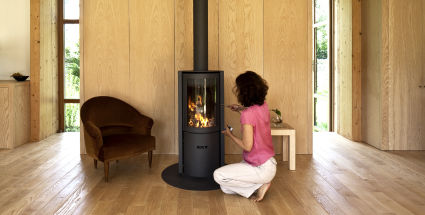
In these times of ecological emergency, bioclimatic architecture is becoming an absolute necessity. This approach to construction involves getting the most out of a building’s environment to minimise its ecological footprint. This is about taking the climate and geography of a site into account, as well as choosing very specific materials, with a view to limiting the energy consumption and pollution of the future home. But these factors should in no way compromise comfort, whatever the season! Quite a challenge, but one that we must tackle.
The ABC of environmentally friendly architecture: what a building is covered in needs to create an airtight seal between the air inside and the air outside, preventing heat transfer as much as possible. To do this, materials like wood (a fantastic natural insulator) or concrete (which absorbs the warmth of daylight and redistributes it at night) are favoured.
Doors and windows are a major challenge: while glass can jeopardise the airtightness of the building, it is also the best way to guarantee some natural warmth... thanks to the sun. Also, there are generally very large glazed surface areas facing south, which are also very well insulated (with the use of triple glazing, for example) combined with sun awnings so inhabitants can adjust the heat input in any season.
That is the principle of a passive house! The result: the heating system uses hardly any energy, the temperature remains steady, and the home is incredibly comfortable, both in summer and in winter.
Another aspect of sustainable architecture involves taking a completely different approach to classic architecture for homes. You can also reduce your ecological footprint by reducing the surface area of the house! That’s the idea behind “tiny houses”, modular little homes of between no more than 20 and 30m2 which use hardly any energy... and which boast the advantage of being affordable at unbeatable prices.
The same affordable, modular principle is used in “container” homes, made of recycled industrial containers, which are particularly sturdy and well insulated. Lastly, there are other kinds of homes that are totally based on recycling materials, like the “Earthship” movement, involving houses that are made entirely out of reclaimed materials (tyres, cans, bottles etc.) and are totally self-sufficient in terms of energy.
What do all of these sustainable constructions have in common? They are really well insulated and able to make the most of natural solar energy, which means that all they need is a supplementary heating solution to keep warm in winter. For that, a wood or pellet stove is a must! Indeed, they provide flexible and particularly pleasant warmth. But above all, the fuel is natural and renewable, which makes them the perfect solution for bioclimatic architecture.